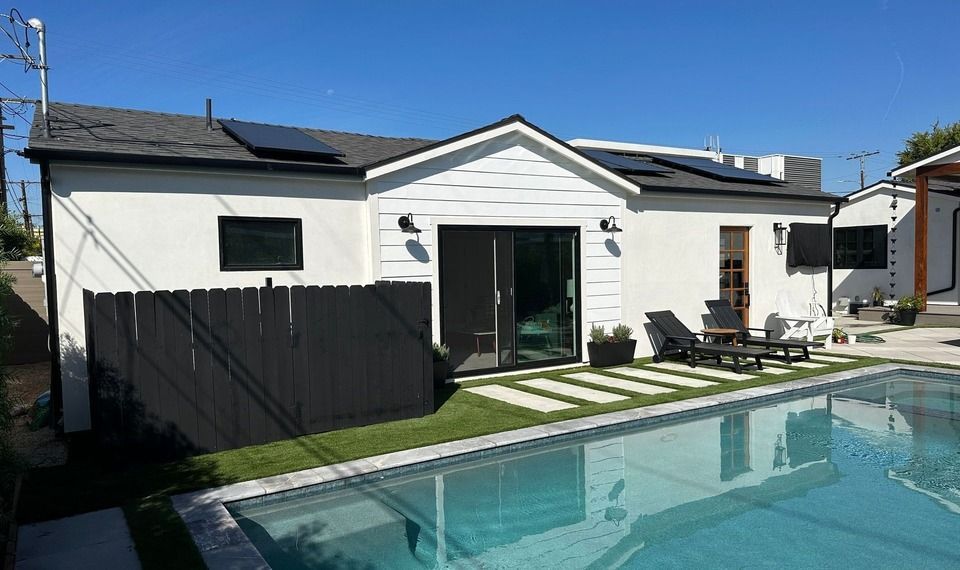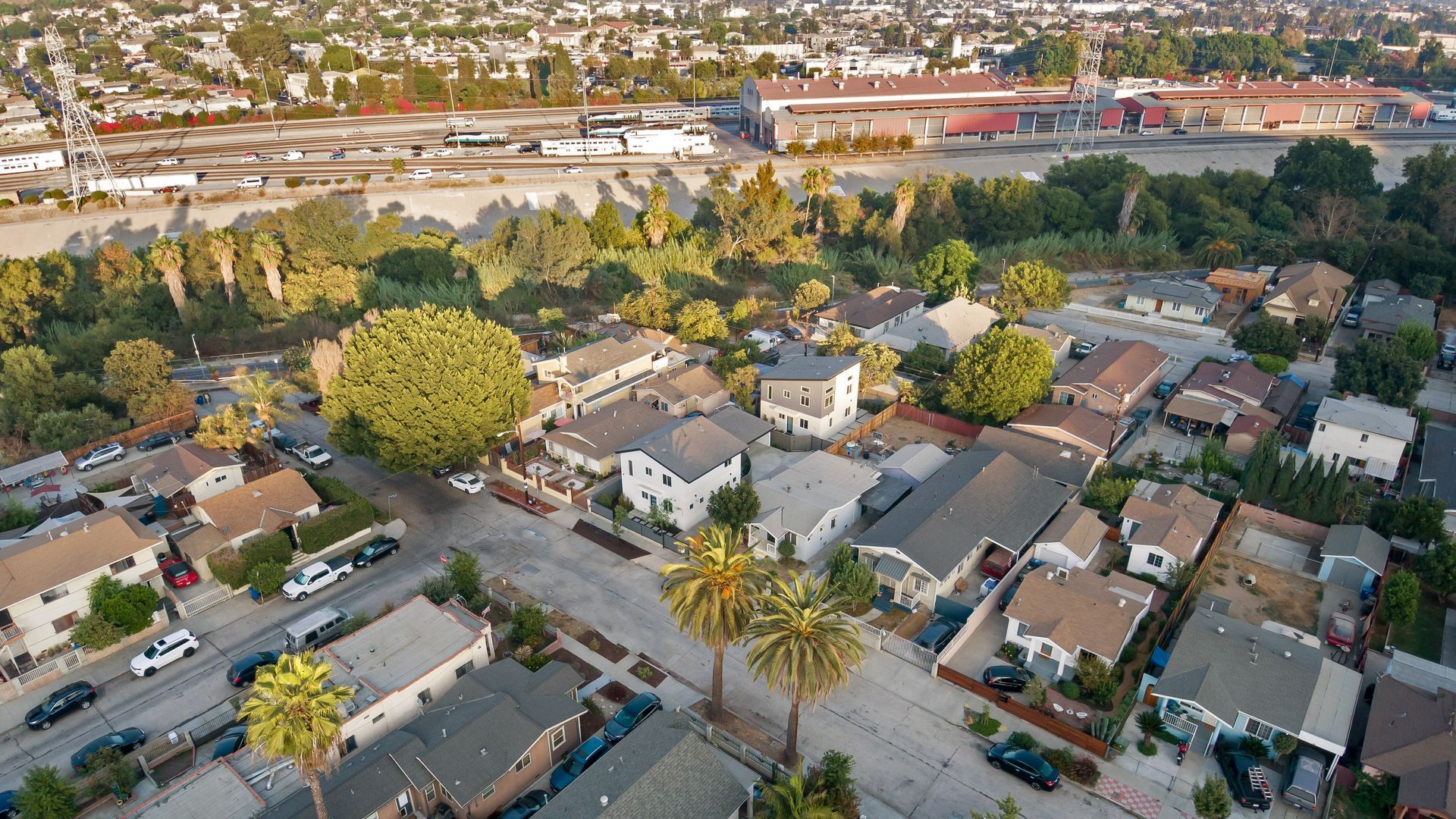All-Electric ADUs: Save Money, Improve Indoor Air Quality, and Boost Efficiency
October 19, 2024
Costs, Benefits, and Design Considerations of an All-Electric ADU

As California moves towards a cleaner, more sustainable future, energy efficiency and renewable energy are becoming a central focus in residential construction. While statewide all-electric mandates are not yet in place, cities like Berkeley and Santa Monica have already adopted regulations requiring new residential construction, including ADUs, to go fully electric. If you’re considering building an ADU, choosing an all-electric design offers a range of advantages—from lower energy costs and improved indoor air quality to a significantly reduced carbon footprint.
Let’s explore the costs, benefits, and design considerations of building an all-electric ADU.
Cost-Effective Considerations
Building an all-electric ADU offers significant financial benefits and helps future-proof your home. In most cases, your ADU will have an electric heat pump HVAC system and an electric heat pump water heater to meet the California energy code requirements. This requirement helps simplify the decision to go with an all-electric design and reduces reliance on gas appliances. Heat pump appliances are much more efficient than gas appliances, leading to lower utility bills – especially when paired with solar panels.
Opting for an all-electric ADU can lead to both cost and time savings during construction. Since there’s no need to connect gas to the ADU, homeowners avoid the additional expense of running a gas line from the gas meter to the ADU. This not only reduces installation costs but also speeds up the construction timeline by eliminating the coordination required with an extra utility provider.
The Benefits of Going All-Electric
Going with an all-electric ADU offers a wide range of advantages, including cost savings, environmental benefits, and improved health outcomes. Here are some key benefits to consider:
- Energy Efficiency: Electric systems, particularly when combined with solar panels, are more energy-efficient than traditional gas-powered setups. This means lower energy bills and reduced waste.
- Healthier Indoor Air: One of the most significant benefits of an all-electric ADU is the improvement in indoor air quality. Gas appliances can release harmful pollutants like carbon monoxide and nitrogen dioxide into the home. By eliminating gas appliances, an all-electric ADU ensures cleaner, healthier indoor air—particularly beneficial for households with children, elderly residents, or individuals with respiratory conditions.
- Electric Induction Cooktops: When transitioning to an all-electric kitchen, electric induction cooktops offer a superior cooking experience compared to traditional gas stoves. Induction cooktops use electromagnetic fields to directly heat the cookware, making them faster and more efficient than gas or traditional electric stoves. Additionally, they allow for precise temperature control, which improves cooking performance. Another major benefit is safety—induction cooktops remain cool to the touch, reducing the risk of burns. Since no open flame is used, they also improve indoor air quality by eliminating the pollutants released during gas cooking.
- Increased Property Value: Homes with all-electric systems and renewable energy sources like solar panels are often valued higher due to the long-term cost savings and sustainability they offer.
- Environmental Impact: Electric appliances produce fewer greenhouse gases than their gas counterparts. Paired with solar energy, your ADU can become a green, self-sustaining house that significantly reduces your overall carbon footprint.
Solar Panel Requirements
In California, solar panels are typically required for ADUs larger than 950 square feet, based on state energy calculations. The exact requirements can vary depending on the climate zone where the ADU is located. Coastal areas with milder temperatures have different square footage thresholds compared to hotter inland regions, where energy consumption for cooling is higher.
Solar installation for ADUs typically costs between $12,000 and $15,000, depending on the system size and energy needs. However, state and federal incentives, such as the federal solar tax credit (up to 30%), can significantly reduce these costs. Over time, a solar-powered ADU can dramatically lower or eliminate electricity bills, offering substantial long-term savings.
Design Considerations for an All-Electric ADU
Designing an all-electric ADU offers great flexibility while ensuring efficiency. The use of electric water heaters is essentially mandatory in all ADUs, making the transition to an all-electric setup even smoother. While some adjustments may be required for other electric appliances, these design changes are minimal and easily integrated into your ADU’s layout.
For instance, electric tanked water heaters can be installed externally or in concealed spaces like closets, allowing them to blend into the overall design without compromising function. Heat pump HVAC systems, which handle both heating and cooling, are compact and are either ductless or ducted, making them ideal for smaller spaces. Additionally, modern electric appliances are designed with aesthetics in mind, ensuring they fit seamlessly into any style.
At ADU Homes, our team works closely with homeowners to design and build energy-efficient ADUs that meet both functional and aesthetic goals. From selecting the right appliances to ensuring your electrical system is optimized, we’ll help you create an ADU that’s as beautiful as it is sustainable.
Sustainability and the Shift Towards Electric Living
California is pushing towards a greener future, and the trend towards all-electric construction is only growing stronger. Whether mandated by local regulations or adopted voluntarily, building an all-electric ADU helps future-proof your home and aligns with the state’s renewable energy goals.
Beyond meeting regulatory requirements, going all-electric offers long-term benefits that make a real difference. By integrating solar panels, you can reduce reliance on the grid and lower energy costs. Contributing to a more sustainable future not only benefits your household but also helps reduce environmental impact on a larger scale.
Ready to Build Your All-Electric ADU?
Building an all-electric ADU isn’t just a trend—it’s a smart, future-proof investment in both your property and the planet. Whether you’re motivated by lower energy costs, healthier indoor air quality, or a desire to meet California’s sustainability goals, ADU Homes is here to guide you every step of the way.
Contact us today to learn more about our all-electric ADU options and schedule your free consultation. Let us help you design a modern, energy-efficient ADU that fits your lifestyle and contributes to a more sustainable future.
KEEP IN TOUCH
SUBSCRIBE TO OUR NEWS
Contact Us
Thank you for subscribing!
Oops, there was an error subscribing
Please try again later.
ADU Homes | All Rights Reserved | Terms and Conditions | Privacy Policy




